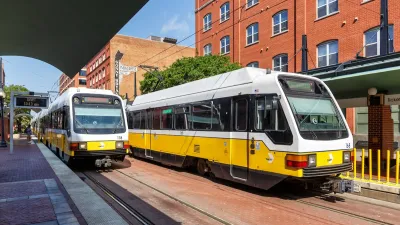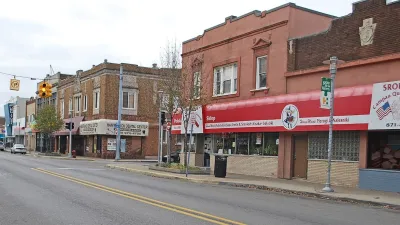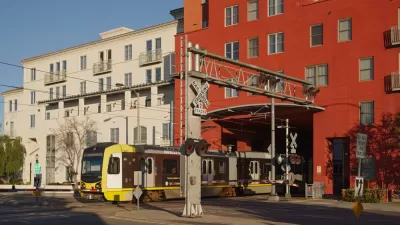Six years ago, the 620-square-mile city had not one bike lane and forty McDonald's franchises.
When Oklahoma City mayor Mick Cornett read that his hometown topped a list of America's fattest cities, he challenged himself and the city to collectively lose one million pounds.
"I was seeing how we had designed the city around the automobile. No one walked anywhere—we didn’t have sidewalks to any great extent in the suburbs," Cornett told Men's Fitness. "Our inner city grade schools didn’t even have gymnasiums. That was the culture that we had created for ourselves."
The mayor hired Jeff Speck to advise him on what could be done. Speck determined that the city had twice as many car lanes as it needed. Further, the one-way system of highways encouraged high speeds and severely impacted walkability. The mayor recognized that the city's health problems were directly related to the walkability problem.
In addition to building a convention center and other capital improvement projects, MAPS 3, as it is called, would pay to address the city's obesity epidemic by building bike lanes, sidewalks and health and wellness facilities as well as a downtown public transit system. Instead of a soda tax, which would have been politically unpopular in such a conservative town, the citizens of Oklahoma City agreed to finance the project partially through the extension of an expiring sales tax program for a period of seven years.
"The experiment is unusual in terms of its ambition, breadth and cost, all of which take it beyond anything being attempted by other American cities in the fight against fat," reports Ian Birell.
The city reached is goal of losing one million pounds, and the mayor shed nearly forty himself. The once-dilapidated downtown district went from having one hotel to fifteen.
However, Birrell is cautiously optimistic. "Yet the key question is whether even such valiant and wide-ranging efforts can dent such a huge health problem, one needlessly killing so many people on the planet."
FULL STORY: The Fat City That Declared War On Obesity

Planetizen Federal Action Tracker
A weekly monitor of how Trump’s orders and actions are impacting planners and planning in America.

Map: Where Senate Republicans Want to Sell Your Public Lands
For public land advocates, the Senate Republicans’ proposal to sell millions of acres of public land in the West is “the biggest fight of their careers.”

Restaurant Patios Were a Pandemic Win — Why Were They so Hard to Keep?
Social distancing requirements and changes in travel patterns prompted cities to pilot new uses for street and sidewalk space. Then it got complicated.

Platform Pilsner: Vancouver Transit Agency Releases... a Beer?
TransLink will receive a portion of every sale of the four-pack.

Toronto Weighs Cheaper Transit, Parking Hikes for Major Events
Special event rates would take effect during large festivals, sports games and concerts to ‘discourage driving, manage congestion and free up space for transit.”

Berlin to Consider Car-Free Zone Larger Than Manhattan
The area bound by the 22-mile Ringbahn would still allow 12 uses of a private automobile per year per person, and several other exemptions.
Urban Design for Planners 1: Software Tools
This six-course series explores essential urban design concepts using open source software and equips planners with the tools they need to participate fully in the urban design process.
Planning for Universal Design
Learn the tools for implementing Universal Design in planning regulations.
Heyer Gruel & Associates PA
JM Goldson LLC
Custer County Colorado
City of Camden Redevelopment Agency
City of Astoria
Transportation Research & Education Center (TREC) at Portland State University
Camden Redevelopment Agency
City of Claremont
Municipality of Princeton (NJ)





























